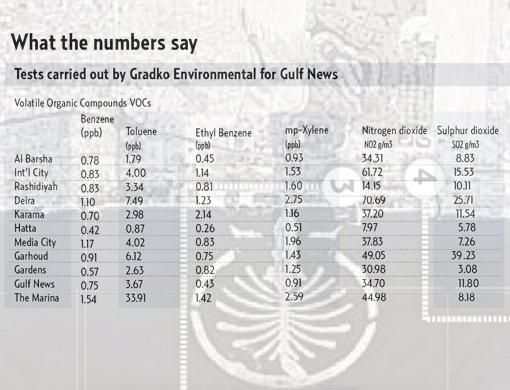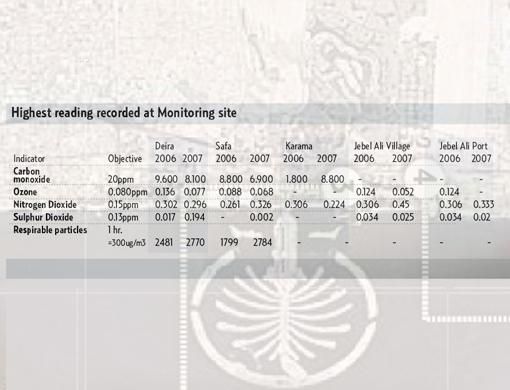Dr Lars Gidhagen, Air Quality Consultant Services Manager from the Swedish Meteorological and Hydrological Institute (SMHI), who attended the EnviroCities 2008, said he was very much in favour of passive tubes, both for an initial assessment or as a complement to more sophisticated automatic monitors.
Toluene and Benzene: “Whatever exposure to benzene may increase cancer risk, but the levels you have are not higher than those you find in Swedish cities.
All levels of toluene, including the much higher values at the Marina, are below the WHO guideline. All toluene and benzene data seems reasonable for traffic environments, except The Marina, where the Toluene level is very much
higher. I do not know if there is a gas station or some handling with fuels there. Toluene is also a well-used solvent.''
NO2: You have levels typically of 30-40 mg/m3, maximum 70 mg/m3. This seems reasonable for environments influenced by traffic. The EU limit value for annual averages is 40 mg/m3. This means that you are likely to have an intensively trafficked environment at Deira. Now, even if you exceed the EU limit values, it is not likely that the exposure to NO2 is the most harmful thing.
Normally it is the exposure to small inhalable particles (PM10) coming from vehicle exhaust tubes that are most
dangerous for health. The gaseous NO2 is more like an indicator of a group of vehicle generated air pollutants, of which small particles are the most dangerous.
The NO2 levels indicate an air polluted by combustion exhausts, and it would be good for health to lower the levels to, at least, below the EU limit of 40 mg/m3.
SO2: “SO2 emissions are normally found at industrial plants using high sulphur fuels like heavy fuel oils or coal. You may also have high sulphur content in your diesel. You can see somewhat raised
SO2 levels at the same sites where NO2 is raised, so part of the SO2 comes from traffic. Ship traffic will generate a lot of SO2. However, the levels given by the passive tubes indicate no harm to people's health.
GOVERNMENTDUTY
Denise Welsh, from Air Quality Consultants in the UK, provides consultancy support to developers, industry, local authorities and central government.
“In the UK, the government has a duty to meet air quality objectives. An annual mean objective would apply at the facade of a home, while an hourly objective would apply in a garden or street café. For nitrogen dioxide the annual mean objective is 40 mg/m3, and the hourly mean objective is 200 mg/m3 (no more than 18 excesses in a year).
Where a measured annual mean concentration is greater than 60 mg/m3, there is the possibility that the hourly mean objective would be exceeded at this location,'' she said. All of the measurements were taken over short periods of just 10 days and therefore results should be interpreted with care.
With this in mind, the nitrogen dioxide monitoring data appear to show four locations with concentrations above the annual mean objective, two of which also exceed 60 mg/m3.
There is thus a chance that the hourly mean objective would also be exceeded at these locations. In the UK, nitrogen dioxide is generally a greater problem where traffic flows are high and congested, traffic speeds are low, and where dispersion of pollutants is restricted, for example in street canyons, where buildings either side of the road are taller than the road width (such as in city centres).
All of the short-term measurements of benzene appear to meet the 2010 UK annual mean objective of 5 mg/m3; none of the measurements are particularly high.
Sulphur dioxide is only an issue in the UK close to industrial sources and in areas with a high density of domestic solid fuel burning. All of the sulphur dioxide concentrations provided are well below the objectives.
However, the averaging period was only 10 days, so the 15 minute, hourly and daily variation in concentrations would not be apparent, and the average could potentially mask any peaks in concentration during that period.''














